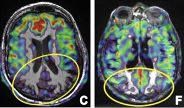The role of magnetic resonance imaging in the diagnosis and prognosis of dementia
DOI:
https://doi.org/10.17305/bjbms.2022.8085Keywords:
Dementia, cognitive impairment, magnetic resonance imaging, arterial spin labelingAbstract
Dementia is a syndrome characterized by multidomain acquired chronic cognitive impairment that has a profound impact on daily life. Neurogenerative diseases such as Alzheimer's disease or nondegenerative diseases such as vascular dementia are considered to cause dementia. The need for further diagnostic improvement originates from the prevalence of these conditions, especially in developed countries with a predominance of the elderly population. Today, the diagnosis and follow-up of all neurodegenerative diseases cannot be performed without radiological imaging, primarily magnetic resonance imaging (MRI). The introduction of 3T MRI and its modern techniques, such as arterial spin labeling, has enabled better visualization of morphologic changes in dementia. For better diagnosis and follow-up in patients with dementia, various semiquantitative scales have been designed to improve the accuracy of assessment and decrease interobserver variability. Moreover, there is a growing need for MRI in the assessment of novel therapies and their side effects. To better apply MRI findings in the diagnosis of both already developed dementia and its early stages, the aim of this paper is to review the available literature and summarize the specific MRI changes.
Citations
Downloads

Downloads
Additional Files
Published
License
Copyright (c) 2022 Milica Živanović, Aleksandra Aracki Trenkić, Vuk Milošević, Dragan Stojanov, Miroslav Mišić, Milica Radovanović, Vukota Radovanović

This work is licensed under a Creative Commons Attribution 4.0 International License.
How to Cite
Accepted 2022-11-24
Published 2023-03-16









